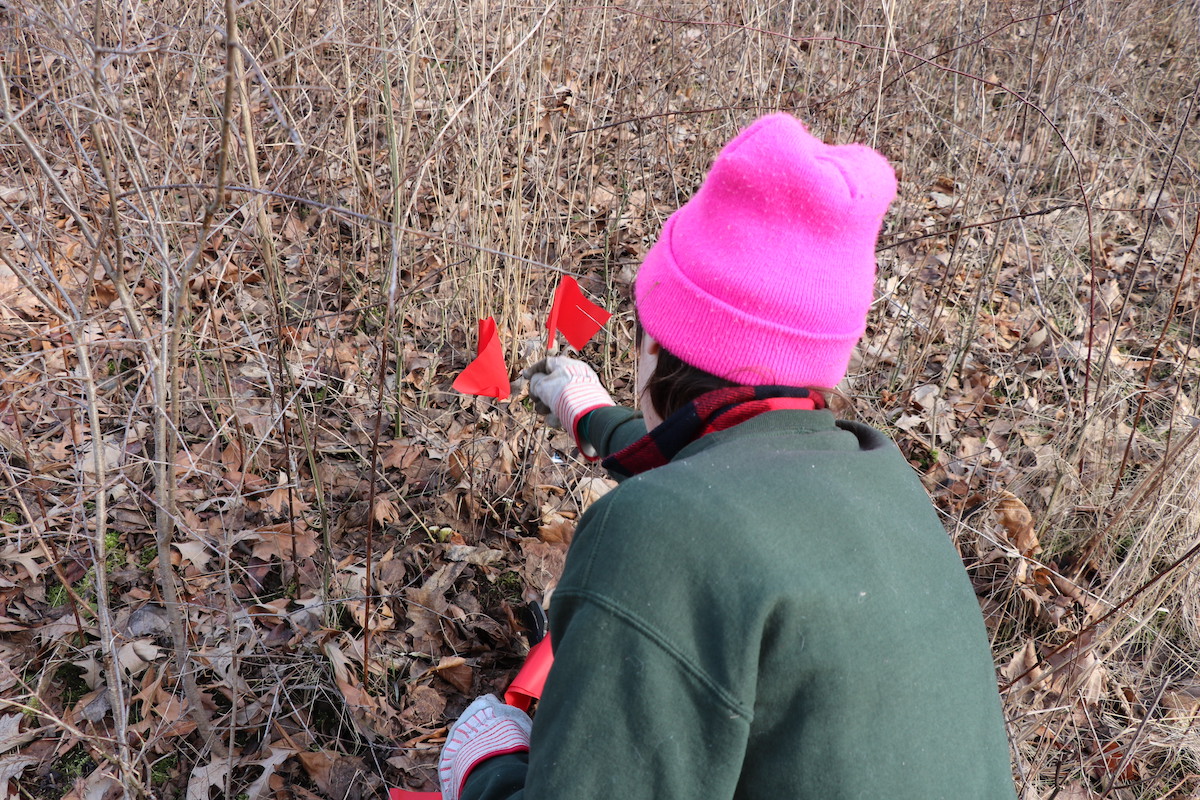By Penelope Gardner
Medill Reports
Volunteers arrived at 10 a.m. at Beaubien Woods on a cold Saturday morning to battle invasive species in an ongoing war. Together, on Feb. 3, the volunteers and Field Museum staff removed buckthorn and honeysuckle, invasive species that choke out native plants and trees.

The Field Museum brings volunteers together every month. Laura Milkert and Catherine Hu, conservation ecologists at the Field Museum, built a fire when they arrived to burn the removed buckthorn and honeysuckle. The Field Museum gets permission from the Forest Preserve of Cook County for both the fire and the volunteer event at Beaubien Woods.

Hu went over what the volunteers would be doing to clear buckthorn and honeysuckle from an area along the road. The effort will allow native plants to grow there once more and open up the area to increase visibility.


After a difficult week, three friends in pink, Hickey, from left, White and Bree Stack, came together to volunteer. It was their first time at an event like this, but they said they enjoy both the work and the opportunity to get out in nature.

Abdennabi joined the group at Beaubien Woods once before. He said he enjoys the restoration aspect of this volunteering even though he is doing it for school.

Bourbois enjoys this type of work and frequents these volunteer events.
“There’s a feeling of community when you’re working towards a common goal,” Bourbois said.

“Everybody’s looking for ways to get outside, and this is a very fulfilling one,” Bourbois said.

The volunteers all labeled where they removed plants with red flags so Hu could later go through and apply herbicide on the stumps. It is important to apply herbicide so the plant does not grow back. Since this area was so overrun with invasive plants, herbicides were needed.
While the work may seem tedious, “I’m having a great time,” Hickey said.

The team could easily see the impact they made on the visibility of the landscape.
“It used to be foreboding, and in opening it up you can see the beauty,” Bourbois said.


Patton used the buckthorn bark to practice dyeing handkerchiefs before the next volunteer event on March 2, when everyone will be able to dye a handkerchief. The color of the handkerchief can be different depending on the temperature of the water and if they add other chemicals, like soda ash.
To join the team, sign up here.
Penelope Gardner is a health, environment and science graduate student at Medill. You can find her on LinkedIn.

